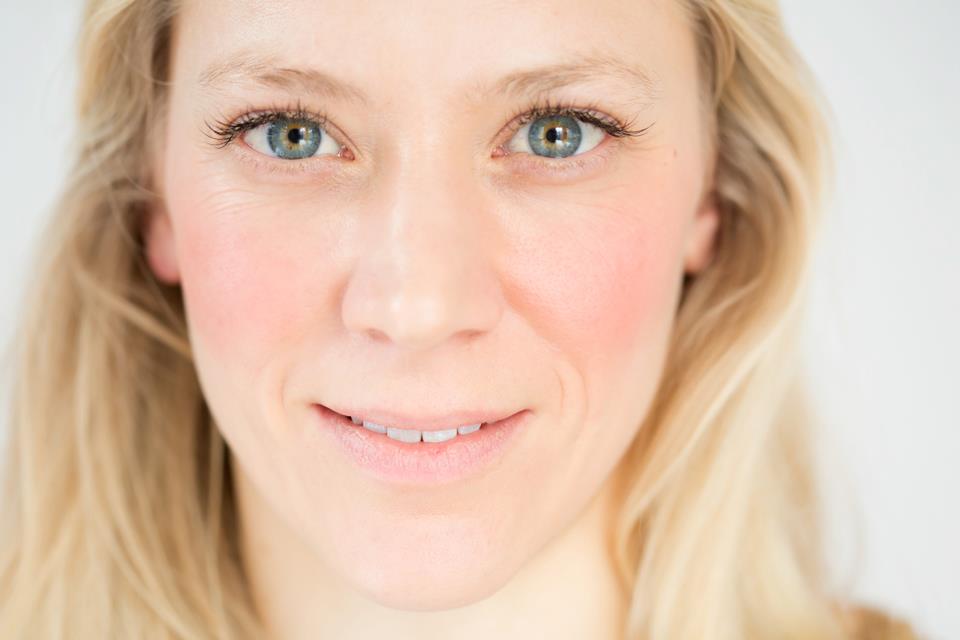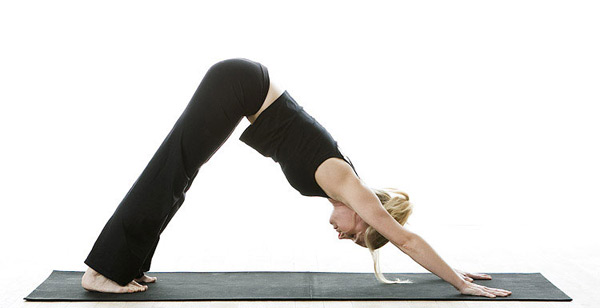
Stress and increment in chronological age, tends to weaken the muscles around the eye. Eyesight becomes weak after the muscles around the eyes lose their elasticity and become rigid, thereby reducing the power to focus different distances. In addition, tension around the eyes affects the brain causing stress and anxiety. Yoga is good way to enhance vision.
Our vision is a result of the light ingested by the eyes. When light reflects off an object, it enters the lens of the cornea. The cornea is responsible for refracting the rays of light that pass through the pupil. The iris acts as a shutter on a camera, becoming smaller or bigger as needed to let more or less light pass through. Once the light passes through the lens, it reaches the retina. Within the retina are thousands of light-sensing nerves (called rods and cones) which translate that light into electrical signals that the brain can understand. Those electrical signals are finally translated as an image, and so we ‘see.’ In order for the rods and cones, and the other parts of the eye to work, they must have plenty of blood flow. As we age, our circulation usually worsens, unless we do something to change that.
There are specific yoga exercises that keep all the working parts of the eye working at their optimum.
Yoga Exercises for Vision
Exercising the eyes releases any build-up of tension and aids relaxation. When practicing, keep your head still and move only your eyes.
- Look Ahead. Stare at your thumb, then look into the distance. Relax and repeat. Move eyes. With wide, look from side to side 10 times, then up and down 10 times, and then diagonally 10 times.
- Shut your eyes and roll your eyeballs around for a minute.
- Rub your palms together and gently cup them over your closed eyes for around a minute. This is known as palming and is very beneficial for the eyes. The eyes need darkness to rejuvenate themselves and this need is best served by palming. Palming should be done after every eye exercise, to relax the eyes and every now and then during the day.
- Look up to the position in the middle of your eyebrows. Hold for a few seconds and then move your gaze downwards, towards your nose. This is called Sambhavi mudra.
- Blood-flow to the eyes and brain can be enhanced by practicing inverted poses like downward facing dog, headstand, handstand and dolphin pose.
Adho Mukha Svanasana (Downward Facing Dog):

- Begin on your hands and knees. Your wrists should be underneath your shoulders, and your knees underneath your hips.
- Inhale as you tuck your toes under your heels. Then exhale to lift your hips, coming into an upside down “V” shape called Downward Facing Dog.
- Spread your fingers wide and create a straight line between your middle fingers and elbows. Work on straightening your legs and lowering your heels toward the ground. Your heels should be slightly wider than your toes, so the outside edges of your feet are parallel with the outside edges of your mat. Relax your head between your arms, and direct your gaze through your legs or up toward your belly button. Work on holding for five breaths.
Sirsasana (Headstand)
- Interlace fingers to form a cup with palms. Place forearms and wrists on a folded blanket.
- Place crown of head on floor with slight emphasis of weight towards forehead.
- Walk feet towards head and lift knees gently upward.
- Straight legs extended.
- Lengthen both sides of rib-cage. Navel-point in.
- Tailbone extends towards heels.
- Shoulder blades wide and floating towards kidneys to decompress neck.
- Follow with Shoulderstand or Child’s pose.
- Always maintain a calm and even breath.
Adho Mukha Vrksasana (Handstand)
- Come into downward facing dog with the hands about a foot away from the wall.
- Walk the feet in closer to the hands, bringing the shoulders closer to the wall.
- Bend one knee and kick up with the other leg, bringing the heels to the wall over your head.
- Practice taking the heels off the wall and balancing.
- Bring one leg down at a time and rest before trying to kick up with the opposite leg so you stay balanced.
Makarasana (Dolphin Pose)
- Come onto the floor on your hands and knees. Set your knees directly below your hips and your forearms on the floor with your shoulders directly above your wrists. Firmly press your palms together and your forearms into the floor.
- Curl your toes under, then exhale and lift your knees away from the floor. At first keep the knees slightly bent and the heels lifted away from the floor. Lengthen your tailbone away from the back of your pelvis and press it lightly toward the pubis. Against this resistance, lift the sitting bones toward the ceiling, and from your inner ankles draw the inner legs up into the groins.
- Continue to press the forearms actively into the floor. Firm your shoulder blades against your back, then widen them away from the spine and draw them toward the tailbone. Hold your head between the upper arms; don’t let it hang or press heavily against the floor.
- You can straighten your knees if you like, but if your upper back rounds it’s best to keep them bent. Continue to lengthen your tailbone away from the pelvis and lift the top of your sternum away from the floor.
- Stay between 30 seconds to one minute. Then release your knees to the floor with an exhale.
Before beginning the eye exercises, it is important to assume the corpse pose to relax all the body parts.